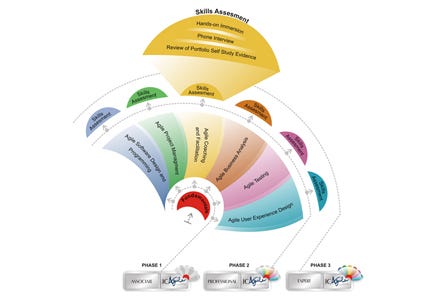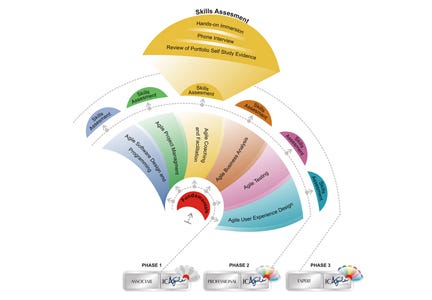Early vs Late Learning : Agile 2011 Sprint 2

See Previous : Agile 2011 Sprint 1: The Craft-based Profession
[ff @TotherAlistair]
Alistair discussed
Early learning vs late learning
which clearly describes one of the major business benefits of Agile.
This is that early, continuous integration allows early learning which leads to risk reduction. He emphasized creating deliberate experiments to increase the knowledge acquisition curve during this phase, being a familiar concept in Lean Startups.
His view is that Late learning, such as the Big Bang or Waterfall approach, delivers little or no knowledge throughout the project. This increases the risk and cost of course correction and impact of change.
Trim the tail when under pressure
Another concept I liked was to Trim the tail by focusing on delivering value OR meeting the due date if the project comes under pressure.
International Consortium for Agile

In terms of scaling the craft concept, Alistair wrapped up by introducing the International Consortium for Agile Roadmap. The Consortium’s aim is to create an entry point into the Agile-as-a-craft journey and become an accreditation agency. Some of the feeling on Twitter questioned the establishment of another Agile body.
The consortium is working with PMI to align Agile with PMI, so that’s a good development in my view.
Is business ready for Agile?
[ff @pmagile] Rob Thomsett from The Thomsett Company discussed if business was ready for Agile. He observed that Agile was very mature in Australia and that the conference was bigger in Australia than the recent European Conference. Some key points were that
- we need to broaden the Agile model to the broader organisational paradigm. Agile needs to step out of hardcore development use. I agree that Agile can be used at a Leadership level across the whole organisation, but that’s another discussion.
- IT adopted a flawed paradigm by focusing on the Engineering Project Management approach. This approach assumes there is a known end state with minimal variation during the project lifespan, with the key driver being stability. This contrasts with Agile where the end state is loosely defined and the project is typically in a state of constant change.
- A key process adoption test is whether the process is simple and transparent. If so, it may work.
Next Post : Agile 2011 Sprint 3: Agile Leadership Lessons
